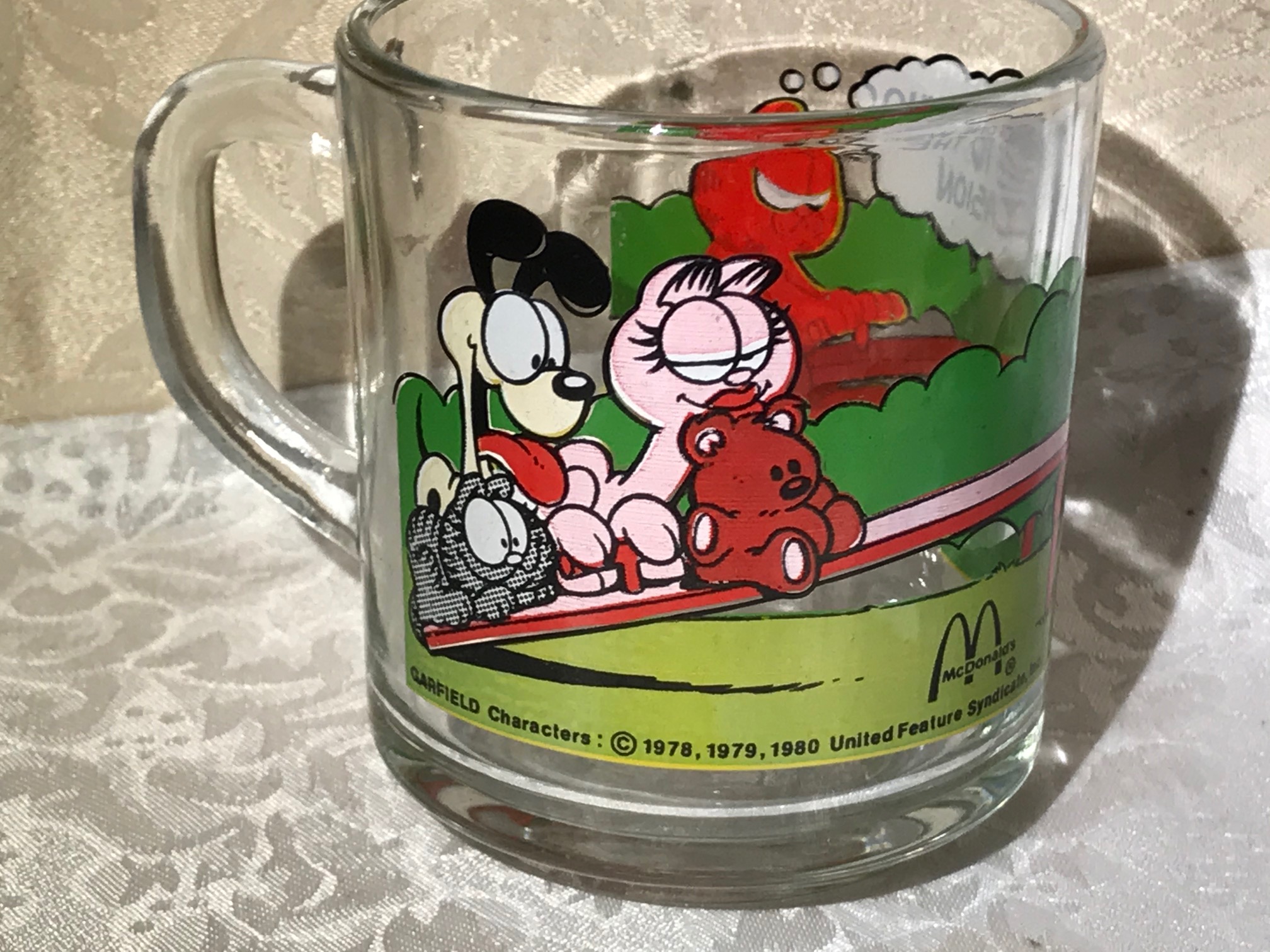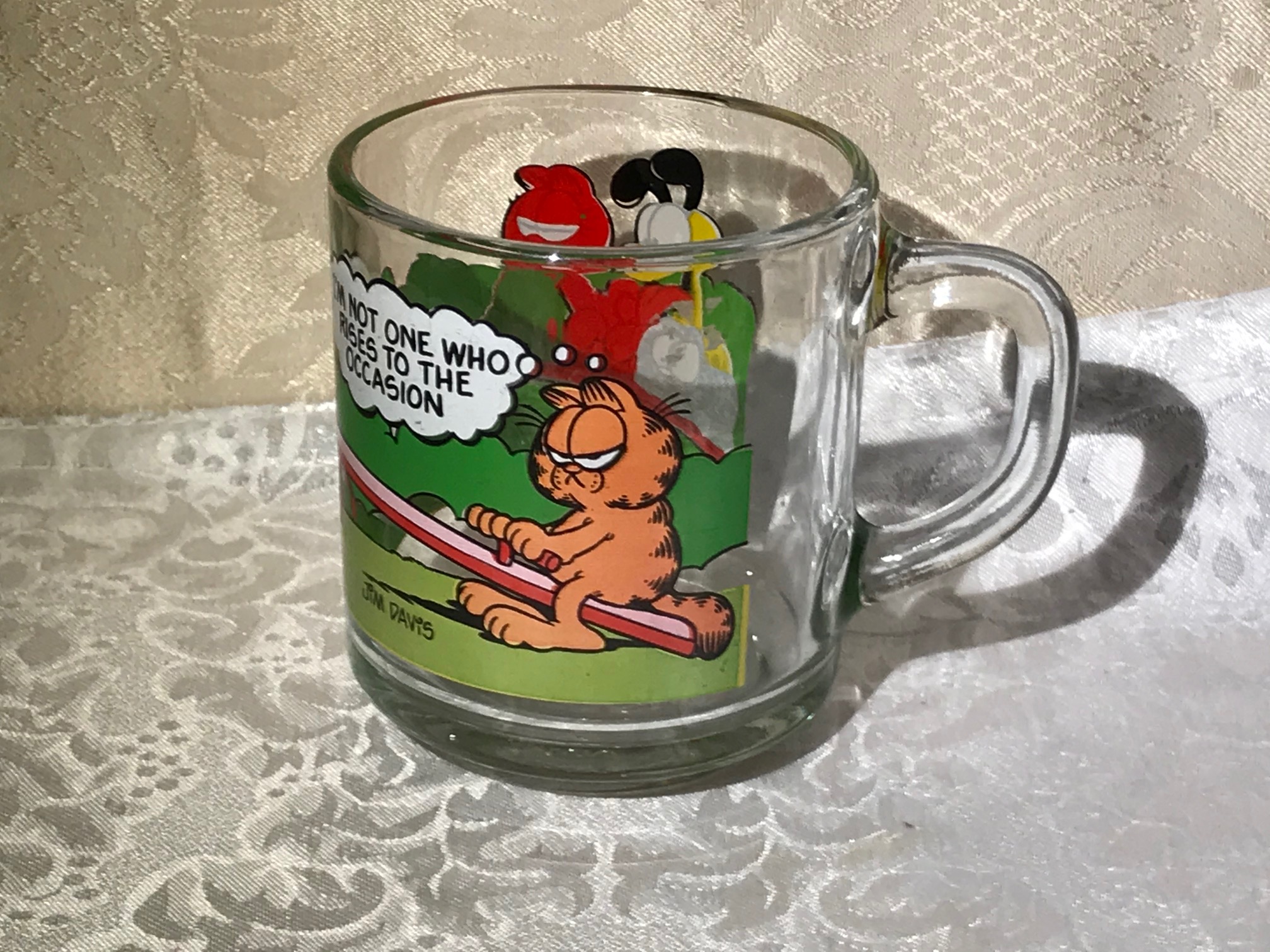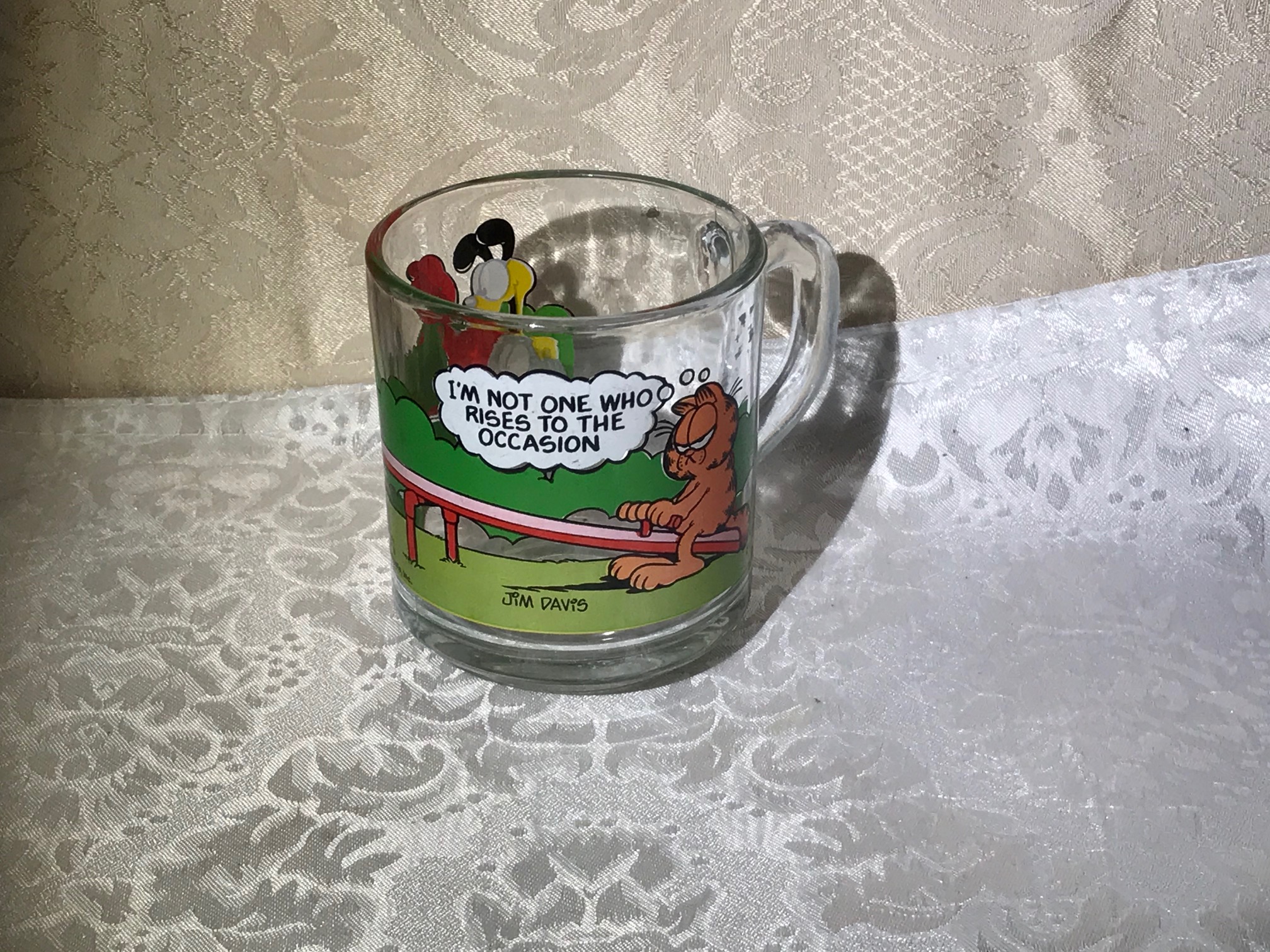1980 McDonalds Garfield Mug: 169,500 ppm Lead (90 ppm is unsafe for kids) + 10,700 ppm Cadmium (causes cancer)

Published: March 1, 2020
Updated: December 4, 2023
Full XRF test results for the McDonald’s Garfield “Rises to the Occasion” glass pictured are below.
To summarize the test results below, this glass tested positive for two heavy metals (metals that are poisonous to humans): Lead and Cadmium — at levels that are considered (by scientists and medical professionals, as well as most U.S. Federal agencies) to be unsafe for humans.
Lead is a neurotoxin and Cadmium is a known carcinogen.
The most concerning metal found in the paint on this particular glass was Lead — the level was as high as 169,500 ppm. For context: Lead is considered unsafe on newly manufactured (post-2008) items intended for use by children when the Lead in the paint, glaze, or coating of an item tests positive at levels above 90 parts per million (ppm.) While it was not technically illegal at the time it was made and sold, this glass McDonald’s mug would be considered illegal today if marketed and sold with the intention to be used by children 14 years old and younger. The law limiting paint on items intended for use by children to 90 ppm is the Consumer Product Safety Improvement Act (passed in 2008).
In general, manufacturers get away with using toxic paint on these items (even similar items made and sold today) because the total toxicant content (Lead, Cadmium, and other heavy metals) in the paint on items intended for use by adults is still not regulated (even though the metals found — at the levels found — are also harmful to adults)! Mugs (and similar glassware items) are not regulated in the same way as children’s items since the industry does not consider them they are not considered by the industry to be “items intended for use by children” (even though these items were obviously sold with the intention that children use them, too).
Said another way, there are no regulatory limits for total Lead content in the paint, glaze, or coating of items intended for use by adults — so at the time of manufacture (and even now, if these were manufactured today) this glass was considered 100% legal. Here’s an article that discusses why this is a problem even though the paint is “only on the outside” of the cup.
Note: In addition to unsafe levels of Lead, Cadmium is considered dangerous in items intended for use by children at levels in the range of 40 to 75 ppm (depending on which regulatory standard you take into consideration). You can learn more about the different regulatory standards for Cadmium at this link.
XRF test on red teddy bear part of design
c. 1980 McDonald’s Garfield mug
60 second reading:
- Lead (Pb): 169,500 +/- 9000 ppm
- Cadmium (Cd): 10,700 +/- 1,000 ppm
- Barium (Ba): 445 +/- 205 ppm
- Chromium (Cr): 1,683 +/- 218 ppm
- Selenium (Se): 1,569 +/- 176 ppm
- Zinc (Zn): 1,515 +/- 154 ppm
- Copper (Cu): 480 +/- 115 ppm
- Nickel (Ni): 1,336 +/- 214 ppm
- Iron (Fe): 1,160 +/- 323 ppm
- Titanium (Ti): 9,991 +/- 863 ppm
Readings are science-based, replicable, and accurate. We test each component of every piece we report on multiple times to confirm the readings. Then, we publish one full set of those readings (per component tested) here on the Lead Safe Mama, LLC website.
This glass mug is discussed in detail in this video.
Here are some additional articles and research supporting the concern for the levels of heavy metals found in these (and other) decorated/ painted collectible glassware (made by McDonald’s and others).
- In 2017, a researcher in Plymouth, England did a study reviewing the potential health impacts of glassware (like the one pictured here) with decorative exterior painted markings that test positive for high levels of Lead, Cadmium, and other heavy metals. You can find a link to that study here.
- In April of 2022, Cracked.com wrote a very well-researched and informative piece about toxicants (specifically Lead and Cadmium) frequently found on promotional collectible glassware pieces made for (and distributed by) McDonald’s. Here’s the link to that article.
- In September of 2023, the European YouTube channel “Fern” published a 16-minute video piece on the issue of toxic painted collectible glassware manufactured (and sold) by McDonald’s. They interviewed me for this piece (and I showed them how I use XRF technology to test consumer goods for toxicants). You can watch that video at this link.
- In November of 2023, the Guardian also wrote a piece about the concern for painted vintage glassware (although this is not just an issue with vintage glassware — newer glassware can be also be painted with toxicant-containing paint). You can check out the article from the Guardian by clicking this link.
- Here’s another link with some guidelines for choosing toxicant-free glassware for your home.
Thank you for reading and for sharing articles from LeadSafeMama.com/ TamaraRubin.com! Please let me know if you have any questions and I will do my best to answer them personally as soon as I have a moment (which may be a while, with over 2,000,000 readers here annually — so please be patient)!
Tamara Rubin
Owner — Lead Safe Mama, LLC
#LeadSafeMama
For those new to the Lead Safe Mama website:
Tamara Rubin is a multiple-federal-award-winning independent advocate for childhood Lead poisoning prevention and consumer goods safety, and a documentary filmmaker. She is also a mother of Lead-poisoned children (two of her sons were acutely Lead-poisoned in 2005).
- Tamara owns and runs Lead Safe Mama, LLC — a community collaborative woman-owned small business for childhood Lead poisoning prevention and consumer goods safety.
- Since 2009, Tamara has been using XRF technology (a scientific testing method) using the exact instrumentation employed by the U.S. Consumer Product Safety Commission to test consumer goods for toxicants (specifically heavy metals — including Lead, Cadmium, Mercury, Antimony, and Arsenic).
- Since July of 2022, the work of Lead Safe Mama, LLC has been responsible for 5 product recalls (FDA and CPSC).
- All test results reported on this website are science-based, accurate, and replicable.
- Items that Lead Safe Mama, LLC reports on are tested multiple times to confirm the results published (for each component tested).
- Tamara’s work was featured in Consumer Reports Magazine in February 2023 (March 2023 print edition) and The Guardian in November 2023.

Never Miss an Important Article Again!
Join our Email List











Oh, you, Garfield!
Oh, you, Cg!
Hello! I have this mug. The ink is on the outside. Does it leach through the glass?
I used this cup for years. I also am a breast cancer survivor. This information is making my head spin. I could have gotten cancer because I used this glass mug? Am I understanding this correctly?
The impact of this mug could have contributed to the factors that caused you to have cancer – yes. The evidence showing Cadmium as a carcinogen is undisputed. The research out of England from 2017 (specifically about the potentially harmful impacts of Cadmium-painted glassware) supports this concern.
I’m sorry for your diagnosis.
Tamara
Wouldn’t it need to be incinerated and inhaled if cadmium is toxic as a carcinogen ???
Putting lips to something doesn’t mean your incinerating it.
no.
Wait, so if it’s ~160,000 ppm lead… that’s parts per million…. that’s 16% lead.
yes – in the paint
Is this the readings off the glass or off the paint?